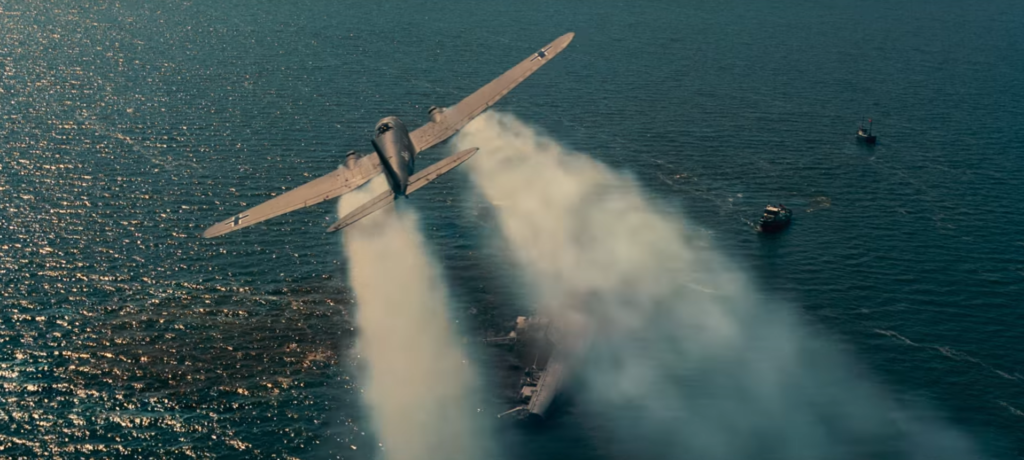Dunkirk – The Visual World of Christopher Nolan
Christopher Nolan once said that he got used to making mostly entertainment movies, but he caught the new inspiration and interest towards historical plots. So this time the Dunkirk evacuation in the wake of the World War II has become the object for his camera. It is wide known that the director has denied almost all graphics, used real navy vessels and employed thousands of extras to make his film lifelike, but we are here not to talk about well-known facts. The visual world of Nolan are the right words to describe this note. In Nolan`s vision the history, even in its most cruel and bloody incarnation, looks far from documentary. His interpretation of Dunkirk is a mixture of polar colours of the palette: suspense is full of motion, hopeless mood is full of hope, and thunder of war is full of silence.
Nolan is the acclaimed master of scenery views. ‘Dunkirk’ confirms this assumption once again with its lifeless landscapes, frozen with the breath of death. Even when the sun is shining over the strait, even when the sea is calm, even when nothing seemingly happens – this tranquility is fragile as first ice covering fallen leaves in November morning. The thing is not only in the camera, Nolan has chosen real places for the filmmaking. Probably that was the best thing he could do to make a spectacular film in our age of boring digital reality.
And again, the contrary – frightening clouds and the sun, glassy sea or waves of storm. Previously used to highlight protagonists and antagonists, action or happy end, now they only imply that the war overwhelms everything, no matter if the audience is tricked by sunny pictures of abandoned beach. The characters find themselves imprisoned there, literally between the devil and the deep sea, having nothing except the desperate hope for escape, rescue or salvation. They seem to be a random choice for this story – there is no background of them shown in the film, nothing like ‘I am Johnny from Nowherechester, and my pretty Jenny is waiting for me there’. Just a bunch of soldier boys waiting for unknown and trying to do their best not to simply wait but to do something seeing that saving the whole contingent is affirmatively impossible. Nolan did not give them names, they were useless, he only made them move while the others were standing in meekly obedience to commanders and fate.
Meanwhile, they are not the only characters. The story is told from three different angles: land, sea and air. Each dimension has its own visual atmosphere and pace of time perception, so they collide in one line only by the end of the film. Like a painter, Nolan features each of them with his contrary colours on the edges – from storm to tranquility, from dark to light. And since the land, the lonesome beach is often shown in uncertain semi-tones while the soldiers are in a silent suspense, the sea is in intensive flow of warships and civil vessels, it is shown in daylight and in the dark of the unpredictable and dangerous night. The air is made of steel and speed, these glimmering colours follows the rhyme of the silver sea and the long stripe of sand catching thousands of people in a monstrous trap.
I do not discuss actors deliberately. Trust me, they have both skills and appearance for the historical film, and it is even more fascinating how they have manage to perform their almost silent roles in the epic suspense, surprisingly bloodless and leaving agony of war somewhere behind enemy lines. The only thing I wonder about in Nolan`s ‘Dunkirk’ is keeping clear of naming the enemy. It would not seem so strange and unnatural if no one use any terms, but heroes of the sea and the air call German bomber aircrafts their real names – Messerschmitt and Henckel. This mystery of not calling the Third Reich the Third Reich left my mind in deep doubt – Nolan has shown the film to British veterans who truly knows that Great Britain never leaves its people even in worst circumstances, how could they react to the fact that the characters were like in the shadows, cursing, blaming, fighting and finally evacuating from under the very nose of “Who-Must-Not-Be-Named”. Although it is just a film, an entertainment to some extent, according to Nolan himself, but the war was terribly real, and it was not fighting the windmills.
Nolan`s intent was to show the Dunkirk operation in a contemplative manner, and it looks like a huge painting, both a landscape and a battle scene scored by Hans Zimmer`s music. He avoided cinematic cruelty and scored an unbelievable goal – made the hell of war look not distorted, but somehow aesthetic.
kot_pofigist




